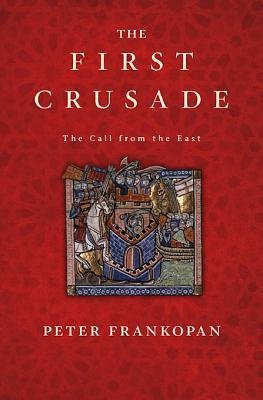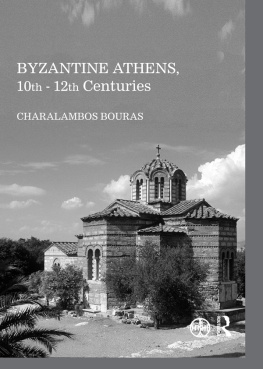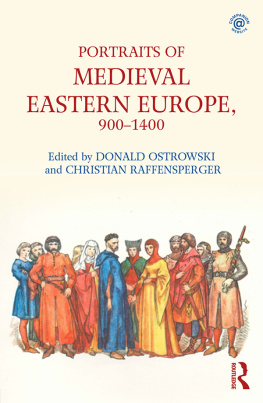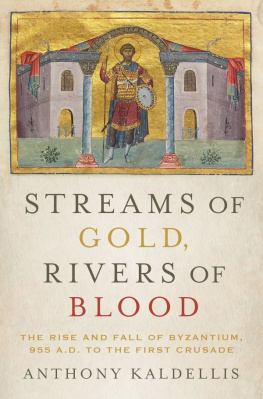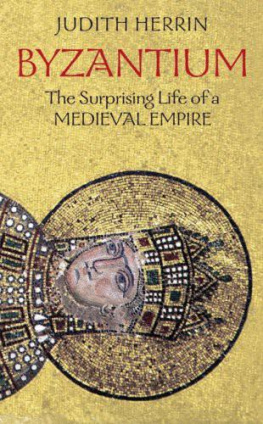
THE ALEXIAD
ADVISORY EDITOR: BETTY RADICE
The Byzantine historian ANNA COMNENA (AD 10831153) was the eldest child of the Emperor Alexius I, and from earliest childhood was in daily contact with the leading figures of the Empire. Through her social position and own interest, she obtained an education in literature and philosophy given to few women in the Middle Ages. Betrothed in childhood to Constantine Ducas, the rightful heir to the throne, she became bitter when the engagement was broken off and her brother John became heir. When Alexius I died in 1118, Anna and her mother did all they could to prevent John from succeeding, and a little later Anna was apparently involved in a clumsy attempt to assassinate her brother. As a result, she was sent into a comfortable exile in a convent.
Defeated in the struggle for power, Anna turned to scholarship and organized a group of philosophers who stimulated the revival of Aristotelian studies. After the death of Nicephorus Bryennius, the man she did marry, she continued the History he had begun, which became the Alexiad, a history of her fathers reign. The Alexiad is a vivid, detailed and generally trustworthy narrative, every page of which reveals the writers passionate personality. It is a uniquely valuable source, particularly as it provides a picture of the Crusade from a different perspective to that of Western historians.
E. R. A. SEWTER was a well-known Byzantine scholar and editor of Greece and Rome. His translation of Michael Psellus: Fourteen Byzantine Rulers is also published in Penguin Classics. E. R. A. Sewter died in 1976.
ANNA COMNENA
The Alexiad
Translated byE. R. A. SEWTER
PENGUIN BOOKS
PENGUIN BOOKS
Published by the Penguin Group
Penguin Books Ltd, 80 Strand, London WC2R 0RL, England
Penguin Putnam Inc., 375 Hudson Street, New York, New York 10014, USA
Penguin Books Australia Ltd, 250 Camberwell Road, Camberwell, Victoria 3124, Australia
Penguin Books Canada Ltd, 10 Alcorn Avenue, Toronto, Ontario, Canada M4V 3B2
Penguin Books India (P) Ltd, 11 Community Centre, Panchsheel Park, New Delhi 110017, India
Penguin Books (NZ) Ltd, Cnr Rosedale and Airborne Roads, Albany, Auckland, New Zealand
Penguin Books (South Africa) (Pty) Ltd, 24 Sturdee Avenue, Rosebank 2196, South Africa
Penguin Books Ltd, Registered Offices: 80 Strand, London WC2R 0RL, England
www.penguin.com
This translation first published 1969
Reprinted in Penguin Classics 2003
Copyright E.R.A Sewter, 1969
All rights reserved
Except in the United States of America, this book is sold subject to the condition that it shall not, by way of trade or otherwise, be lent, re-sold, hired out, or otherwise circulated without the publishers prior consent in any form of binding or cover other than that in which it is published and without a similar condition including this condition being imposed on the subsequent purchaser
EISBN: 9780141904542
CONTENTS
THE ALEXIAD
TRANSLATORS PREFACE
FORTY years have passed since Elizabeth Dawes produced the first English translation of the Alexiad in full. At the time her version was highly praised. In the following year (1929) Georgina Bucklers Anna Comnena appeared, an excellent study of great value but somewhat amorphous and difficult to use a scholars book. Unfortunately Miss Dawes hoped that her readers would find in this volume all the aid they required; consequently she provided virtually no annotation; no maps were furnished, no appendixes of any kind, no genealogical tables and no bibliography. Anna Comnena, though recently reissued, has long been out of print, and it had become more than ever necessary to publish a fresh version, with a brief commentary and other essential help for the reader.
The translator is at once faced with the question: How literal should it be? The old word-for-word construe, of course, was thoroughly abandoned at least a generation ago, but there are still those who like to adhere very closely to the Greek, not merely in diction but even in syntax. Miss Dawes herself preferred the almost literal interpretation, and this inevitably led to solecisms: If they did not whet their swords, they certainly did their souls; By reason of their terror they were almost constrained to belch forth their souls into thin air. A determination to observe hypallage in the Greek can also have bizarre results: Demetrius with murder in his heart whetted his sword and got his bloody right hand ready. It could be argued that this method more truly reflects Annas own thoughts and style, but in general the historian is best served, I think, by a straightforward modern idiom common to scholars on both sides of the Atlantic. The present volume therefore tries to express in contemporary Anglo-American the ideas and language of a Byzantine princess who wrote some eight hundred years ago no easy task. Nothing must be omitted and at all costs obscurity must be avoided, even if need be by a short paraphrase. For example, when Anna writes of Bohemond that by his nostrils nature had given free passage for the high spirit which bubbled up from his heart (Dawes) a particularly awkward sentence in Book XIII one must make an effort to be lucid. What does Anna mean? Presumably Bohemond had broad nostrils (apparently a mark of manhood, for she mentions the fact more than once), nostrils that allowed the breath to escape from his lungs in great gusts or should we say, allowed him to breathe deeply? The whole idea is alien to us. Maybe Normans suffered inordinately from catarrh and Bohemond was an exception. To be fair to Anna, she does not often present such difficulties, for in narrative her style is usually unaffected. She is much more forthright than Michael Psellus, whom she admired and sometimes plagiarized. Where her style becomes elevated and approaches an almost poetic diction, the English must harmonize with her mood, but with due restraint: to reproduce her exclamations, her rhetoric, her passionate outbursts in all their Byzantine glory is apt to end in bathos.
There remains the problem of archaisms. It has been said that Anna wrote in pseudo-Classical Greek, a learned language totally unknown to the ordinary people of Constantinople, an almost entirely mummiform school language(with varying degrees of success). So it must have been in Constantinople: the Greek element (the majority) read and wrote the Byzantine form of the language; the vernacular was probably quite different. There is no need, therefore, to inject thou, thee and thy into a translation of the Alexiad.
The maps are not intended to be exhaustive indeed, they cannot be, for many place-names are still unidentified but they should enable the reader to follow Alexiuss campaigns with fair ease. I am no more consistent in the matter of names than any of my predecessors: I write Dyrrachium rather than Durazzo or even Durres, but Brindisi rather than Brundisium; I retain Smyrna where the moderns would read Izmir, but prefer Joscelin of Courtenay to Iatzoulinos. The alternatives, however, are listed in the notes. In the case of the Crusaders I have for the most part followed Runciman, and where Turks or Patzinaks are concerned I accepted the lead of the Cambridge Ancient History. In this arbitrary behaviour euphony is bound to influence ones choice: Abul-Kasim sounds more convincing than Apelchasem and Raymond de Saint-Gilles than Isangeles. On the other hand, I have carefully retained Annas Franks, Normans, Latins and Kelts; also her Turks, Ishmaelites, Persians, Agarenes and Saracens. These names she uses indiscriminately for the western and eastern enemies of the emperor respectively, sometimes substituting the pejorative barbarians.
Next page

